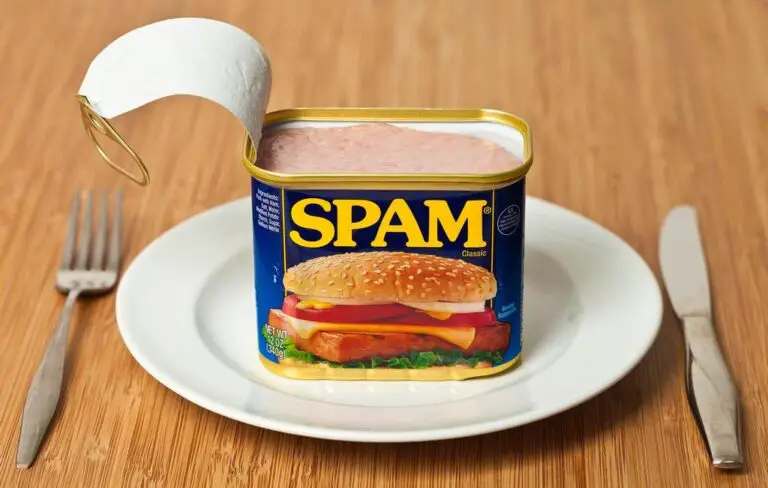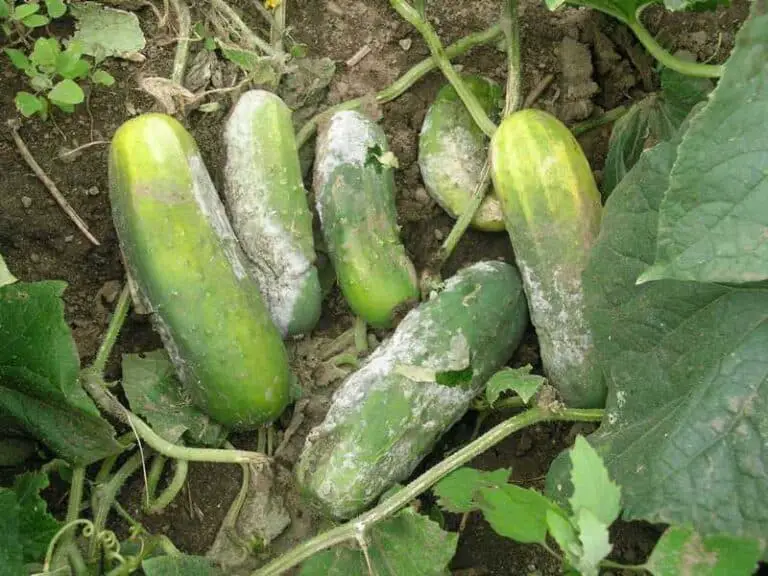Less Salty Spam: How to Remove Salt and Nitrates From Spam

Spam, a pantry staple for many, holds a special place in our hearts, thanks to its convenience and that unmistakable savory punch. But there’s a catch: the salt. Oh, the salt!
It’s no secret that Spam isn’t exactly known for its low-sodium content. In fact, a single bite can sometimes feel like an assault on your taste buds, a flavor explosion of both pleasure and guilt. If you’ve ever found yourself wondering if there’s a way to have a less salty taste from your Spam and eat it too, you’re in the right place.
This article isn’t about shunning this iconic canned meat; it’s about making it better. We’re diving into the world of less salty Spam and exploring ingenious methods to help you reduce its sodium content.
We’ll also discuss the often-overlooked nitrates issue and provide alternatives that will leave you savoring your Spam with a smile on your face and peace in your heart. So, if you’re ready to embark on a flavorful journey that’s kinder to your health, keep reading.
The Problem with Salty Spam
The consumption of canned meat has long been a convenient option for many, especially during times when fresh produce may not be readily available. However, one particular canned meat product that has sparked controversy and concern is Spam.
Despite its popularity, there is growing awareness surrounding the high sodium content of spam and its potential health risks. This salty nature leads to an array of health issues, such as hypertension and heart disease.
Furthermore, not only is spam packed with excessive salt, but Spam also contains nitrates. These chemical additives are used to preserve the meat and give it a longer shelf life. Unfortunately, research suggests that nitrates can have adverse effects on human health as well, including increasing the risk of certain cancers.
In recent years, there has been a surge in individuals seeking alternatives to traditional processed meats due to these concerns surrounding excessive salt intake and nitrate consumption. As people become more conscious of their dietary choices and strive for healthier lifestyles, finding ways to reduce or eliminate salt and nitrates from spam has become a priority for many consumers.
Related: Does Spam Have MSG? Why Is Its Taste So Salty?
Methods for Removing Salt from Spam

There are several methods for removing salt from Spam. Here are some of the most common ones:
1. One method for removing salt from spam is through soaking. By placing the slices of spam in a container filled with water and letting it soak for at least an hour, the salt content can be significantly reduced. The water helps to dilute the salt and draw it out, resulting in a less salty taste. For best results, change the water a few times during the soaking process to ensure maximum removal of salt.
2. Another approach is by boiling or simmering the spam slices in water before consumption. This method not only helps to remove some of the excess salt but also allows for customization of flavor by adding various herbs and spices into the cooking liquid.
As the spam cooks, some of its salt will be released into the boiling water, resulting in a milder and better Spam taste when eaten. It’s important to note that overcooking may lead to a drier texture, so monitoring closely while simmering is recommended.
3. For those who prefer a quick fix and don’t mind sacrificing some authenticity, rinsing off canned spam under running water can help reduce its salty flavor too! While this method may not completely eliminate all of the salt content, it can provide a noticeable improvement in taste without much effort or time invested.
These strategies provide useful ways to enjoy spam without feeling overloaded with sodium and nitrates. Whether you choose soaking, boiling/simmering, or rinsing off canned spam under running water, each option comes with its own advantages and suits various preferences in terms of
Methods for Removing Nitrates from Spam
One of the most effective methods for removing nitrates from spam is by soaking it in cold water. By submerging the spam in cold water and allowing it to sit for an extended period, the nitrates will begin to leach out of the meat.
It is recommended to change the water every few hours to ensure maximum nitrate removal. This method may require some patience, as it can take up to 24-48 hours for significant reduction in nitrate levels, but the results are well worth it.
Another powerful technique for removing nitrates from spam involves using a vinegar solution. By combining equal parts water and white vinegar, you create a potent mixture that can aid in nitrate removal. Simply soak the spam in this solution for several hours or overnight, then rinse thoroughly with cold water before cooking or consuming. The acidity of the vinegar helps break down and neutralize nitrates, resulting in a less salty and healthier product.
Both of these techniques tackle nitrate removal by utilizing simple ingredients readily available at home. Soaking your spam either in cold water or a vinegar solution allows you to enjoy a reduced-sodium meat product without compromising on flavor or texture.
Take control of your salt intake by trying out these methods and savoring a healthier alternative that still satisfies your craving for Spam!
Why Homemade Spam Recipes Healthier?
In a world where convenience often collides with health-conscious choices, the quest for balanced eating remains paramount. For many, traditional canned meat products like Spam have been a quick and tasty go-to, but their high sodium and preservative content can be concerning.
The good news is that you don’t have to bid farewell to the beloved Spam. With a few tweaks and the right ingredients, you can create healthier homemade Spam recipes that not only satisfy your taste buds but also align with your nutritional goals.
- Reducing Sodium Content: The primary challenge with canned meats is their notorious sodium levels. To address this, homemade Spam recipes often incorporate low-sodium or no-salt-added ingredients. You can substitute regular salt with potassium chloride, which imparts a salty flavor without the health risks associated with excess sodium. Also, opt for fresh herbs, spices, and natural flavor enhancers like garlic, onion, and lemon zest to maintain the robust taste without the salt overload.
- Nixing Harmful Additives: Traditional canned meats often contain preservatives and nitrates. In homemade Spam recipes, you can replace these with natural alternatives. For instance, instead of nitrate-laden curing agents, use celery juice, which contains naturally occurring nitrates. Additionally, make sure to select high-quality meat cuts and grind them yourself to avoid fillers and unwanted additives. Creating your Spam at home provides full control over what goes into your dish, ensuring a healthier, tastier outcome.
- Exploring Flavor Variations: Once you’ve tackled the salt and additives, it’s time to get creative with flavors. You can customize your homemade Spam by incorporating various ingredients like diced vegetables, herbs, and spices. Whether you prefer a smoky, spicy, or even sweet twist, experimenting with seasonings and aromatics opens up a world of possibilities. From Spam with a kick of cayenne to a more aromatic rosemary-infused version, the options are endless.
Read: Scrapple or Bacon: Which One Tastes Better and Healthier for You?
Delicious Low-Sodium Spam Recipes
Reducing salt and nitrates in Spam is fantastic, but it’s equally important to make it taste delicious. Here are a few mouthwatering recipes that allow you to enjoy Spam in a healthier way.
1. Spam and Veggie Stir-Fry
Ingredients:
- Low-sodium Spam slices
- Assorted vegetables (e.g., bell peppers, broccoli, carrots)
- Low-sodium soy sauce
- Garlic and ginger (minced)
- Olive oil
Instructions:
- Cut the Spam into thin strips.
- Heat olive oil in a pan and sauté the minced garlic and ginger.
- Add the Spam slices and stir-fry until they start to brown.
- Add the vegetables and continue stir-frying.
- Drizzle low-sodium soy sauce for flavor.
- Serve hot with rice or noodles.
2. Spam Lettuce Wraps
Ingredients:
- Low-sodium Spam slices
- Butter lettuce leaves
- Sliced cucumber
- Sliced bell peppers
- Hoisin sauce
Instructions:
- Cut the Spam into thin strips and cook them in a pan until slightly crispy.
- Place a few Spam strips inside each lettuce leaf.
- Add sliced cucumber and bell peppers.
- Drizzle with hoisin sauce.
- Roll up the lettuce leaf and enjoy a low-sodium Spam wrap.
3. Spam and Pineapple Skewers
Ingredients:
- Low-sodium Spam slices
- Fresh pineapple chunks
- Red onion, cut into wedges
- Low-sodium teriyaki sauce
- Skewers
Instructions:
- Cut the Spam slices and pineapple into bite-sized pieces.
- Thread Spam, pineapple, and onion onto skewers.
- Brush with low-sodium teriyaki sauce.
- Grill or broil until caramelized.
- Serve hot, and the sweet and savory combination will amaze your taste buds.
With these healthier homemade Spam recipes, you can indulge in a beloved classic while taking charge of your dietary choices. It’s all about striking the perfect balance between convenience and health, and creating a culinary experience that suits your palate and well-being.
So, let’s dive into the kitchen and discover the flavors that await in your very own homemade Spam creations.
In Conclusion
While Spam is a beloved comfort food, it’s possible to enjoy it with reduced sodium and nitrates. By following the methods mentioned and exploring low-sodium and nitrate-free alternatives, you can savor the deliciousness of Spam without worrying about its impact on your health.
These recipes also demonstrate that a healthier version of Spam can be just as tasty as the classic. So, indulge in your favorite canned meat without the guilt!
FAQs on Spam Alternatives with Less Salt
How does excessive salt consumption affect health?
How does excessive salt consumption affect health?
What are the best alternatives to reduce salt and nitrates in processed meats?
Using natural herbs and spices as flavor enhancers for Spam, opting for fresh meats instead of processed ones, and choosing low-sodium versions of condiments are effective alternatives to reduce salt and nitrates in processed meats.
Can soaking spam in water reduce its salt content significantly?
Soaking spam in water can reduce its salt content to some extent, but it may not significantly lower it. A better approach involves using multiple techniques, such as rinsing, boiling, and utilizing low-sodium ingredients during cooking.
What are the key differences between traditional and low-sodium spam production methods?
Traditional spam production typically involves higher salt content and the use of nitrates for preservation, while low-sodium production methods involve using alternative natural preservatives and lower-sodium ingredients to maintain flavor and quality.
Can low-sodium spam options be as flavorful as traditional spam products?
Yes, with the right combination of spices and flavoring agents, low-sodium spam options can be as flavorful as traditional spam products, offering a healthier alternative without compromising on taste and texture.
Are there any regulations in place for the sodium and nitrate levels in processed meats?
Various regulatory bodies, such as the FDA in the United States, have established specific guidelines for sodium and nitrate levels in processed meats to ensure consumer safety and promote healthier food choices.
How can consumers identify low-sodium and nitrate-free spam products in the market?
Consumers can identify low-sodium and nitrate-free spam products by carefully examining the nutrition labels, looking for claims like “low-sodium,” “nitrate-free,” and checking for alternative natural preservatives used in the ingredients list.
What are some common myths about salt and nitrates in processed meats that need debunking?
Common myths about salt and nitrates in processed meats that need debunking include the notions that all processed meats are equally harmful, that low-sodium products lack taste, and that all preservatives used in processed meats are equally detrimental to health.






